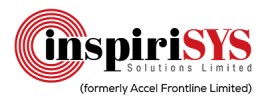Filter interviews by
Signiwis Technologies SAP Abap Developer Interview Questions and Answers
Signiwis Technologies SAP Abap Developer Interview Experiences
2 interviews found
I applied via Walk-in and was interviewed in Apr 2023. There were 4 interview rounds.

28 question multiple option
5 basic coding question they asked
(5 Questions)
- Q1. About oops and multithreading
- Q2. Related arrays and strings
- Q3. No more question they asked
- Q4. What is marker interface
- Ans.
A marker interface is an empty interface that marks a class as having a particular property or behavior.
Marker interfaces do not have any methods or properties.
They are used to provide metadata to the compiler or runtime environment.
Examples include Serializable, Cloneable, and Remote interfaces in Java.
Marker interfaces can also be used to indicate that a class belongs to a certain group or category.
- Q5. What is functional interface
- Ans.
Functional interface is a type of interface in Java that contains only one abstract method.
Functional interface can have any number of default or static methods.
It is used for implementing lambda expressions and functional programming in Java.
Examples of functional interfaces include Runnable, Comparator, and Callable.
Functional interface can be annotated with @FunctionalInterface annotation to ensure it contains only ...
Interview Preparation Tips
Skills evaluated in this interview

String programs and pattern programs
Technical concepts related concepts
(1 Question)
- Q1. All java question like exception handling theads collection
Interview Preparation Tips
Top trending discussions






Interview questions from similar companies

I applied via Campus Placement and was interviewed in Jul 2022. There were 3 interview rounds.

Their are 30 questions which one has to done in 30 mins
(2 Questions)
- Q1. Q1) About the project you have done
- Q2. Q2) some technical questions related to core Java
Interview Preparation Tips

(2 Questions)
- Q1. What is Java Language?
- Q2. Java is a object oriented programming language.

(2 Questions)
- Q1. What is stands for JAVA?
- Q2. Just another virtual accelerator.

(2 Questions)
- Q1. What is the Java?
- Q2. It is a High Level, Multi-paradigm programming, strictly Typed, Platform Independent, General Purpose Programming Language Developed by Mr James Gosling and his team at Sun Microsystems ( now Taken over by...

(2 Questions)
- Q1. What is the size of an int in Java?
- Q2. The size of an int in Java is 4 bytes (32bits).
- Ans.
Yes, the size of an int in Java is indeed 4 bytes (32 bits).
An int in Java can hold values ranging from -2,147,483,648 to 2,147,483,647.
The size of an int can be confirmed using the 'Integer.SIZE' constant in Java.
Using 'Integer.BYTES' will give the size of an int in bytes.
Interview Preparation Tips

(2 Questions)
- Q1. What is the default value of an int in Java?
- Q2. The default value of an int is 0.
- Ans.
Yes, the default value of an int in Java is 0.
In Java, when an int variable is declared but not initialized, it will have a default value of 0.
For example, int num; will have a default value of 0.
This default value is assigned by the Java Virtual Machine (JVM) when memory is allocated for the variable.
Interview Preparation Tips

(2 Questions)
- Q1. What is Process?
- Ans.
A process is an executing instance of a program, encompassing its code, data, and system resources.
A process has its own memory space, which includes the code, stack, and heap.
Processes can be in various states: running, waiting, or terminated.
Example: When you open a web browser, a new process is created for it.
Processes can communicate with each other through inter-process communication (IPC) mechanisms.
Example of IP...
- Q2. Process is a executable is called a process.

(2 Questions)
- Q1. What is JAVA Programming language?
- Q2. It is a High level, Multi paradigm programming language....etc.
Signiwis Technologies Interview FAQs
Tell us how to improve this page.
Signiwis Technologies Interviews By Designations
- Signiwis Technologies Java Developer Interview Questions
- Signiwis Technologies SAP Developer Interview Questions
- Signiwis Technologies SAP Abap Developer Interview Questions
- Signiwis Technologies UI Developer Interview Questions
- Signiwis Technologies Software Engineer Interview Questions
- Signiwis Technologies Software Developer Interview Questions
- Signiwis Technologies SAP Consultant Interview Questions
- Signiwis Technologies Advanced Java Developer Interview Questions
- Show more
Interview Questions for Popular Designations
- Software Developer Interview Questions
- Software Engineer Interview Questions
- Java Developer Interview Questions
- Senior Engineer Interview Questions
- Web Developer Interview Questions
- Senior Software Developer Interview Questions
- Application Developer Interview Questions
- Salesforce Developer Interview Questions
- Show more
Overall Interview Experience Rating
based on 2 interview experiences
Difficulty level
Duration
Interview Questions from Similar Companies
Signiwis Technologies SAP Abap Developer Reviews and Ratings
based on 1 review
Rating in categories
|
SAP Abap Consultant
62
salaries
| ₹1.8 L/yr - ₹5.3 L/yr |
|
Java Developer
12
salaries
| ₹2.5 L/yr - ₹4.2 L/yr |
|
SAP Abap Technical Consultant
12
salaries
| ₹3 L/yr - ₹4.5 L/yr |
|
Software Developer
10
salaries
| ₹1.5 L/yr - ₹5.6 L/yr |
|
Hybris Developer
7
salaries
| ₹3.5 L/yr - ₹7.5 L/yr |

Zidio Development

Northcorp Software

Accel Frontline

Elentec Power India (EPI) Pvt. Ltd.
- Home >
- Interviews >
- Signiwis Technologies Interview Questions















